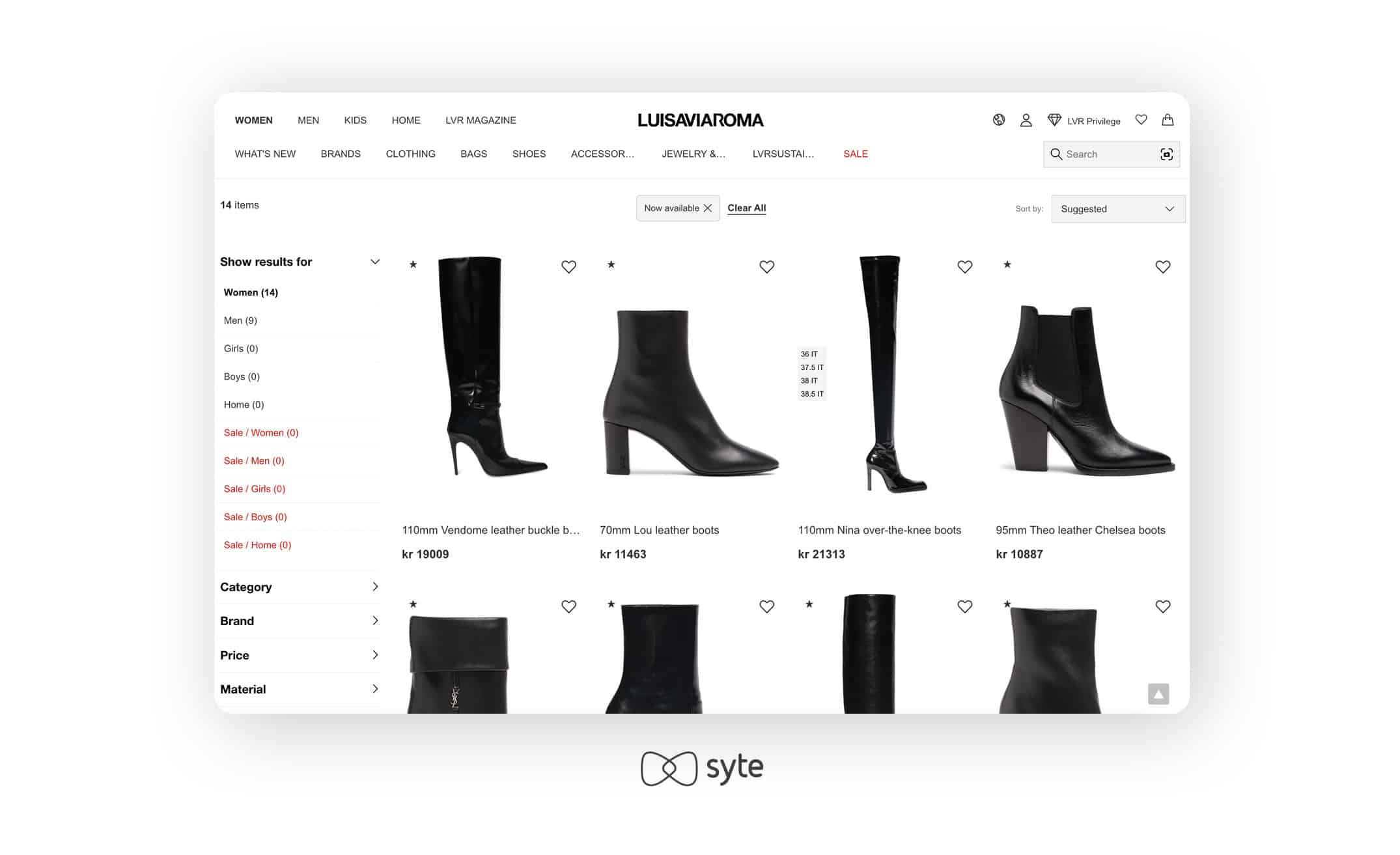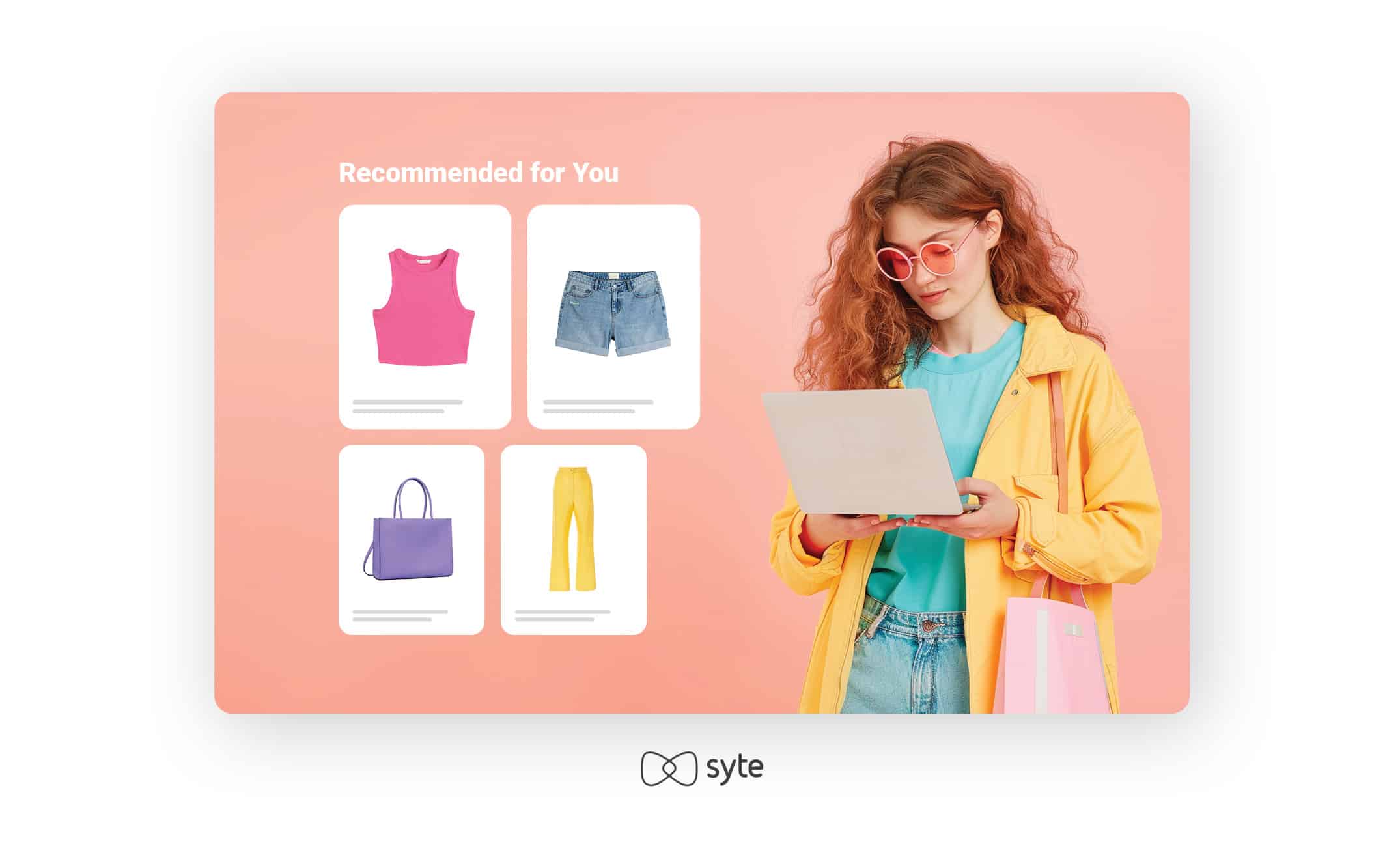Imagine a shopper visiting your website after hearing rave reviews about your brand, eager to purchase stylish ankle boots to complement their outfit. Yet, to their dismay, the boots are nowhere to be found because they’re out of stock. For retailers, this scenario is a nightmare and causes 60% of customers to rethink their shopping. While stockouts may seem inevitable, there are viable solutions. In this article, we’ll provide some actionable tips to help you address stockout issues head-on.
The Out-of-Stock Challenge for eCommerce Retailers
The average stockout rate is around 8%, which poses a significant challenge to brands and often leads to lost sales. Stockouts disrupt customers’ shopping journeys, causing them to abandon their purchases or opt for alternative items that may not meet their expectations. The frustration your customers experience can also mean losing their loyalty in the long term – something that’s already difficult to earn in a sea of choices.
Customers may perceive frequent stockouts as a sign of unreliability or poor service. Negative reviews and word-of-mouth worsen the situation and deter potential customers from engaging with the brand. What’s more, 96% of shoppers intentionally look for unfavorable reviews. The frequency of stockouts can signal more issues regarding your processes, such as poor demand forecasting and logistical challenges.
Running into an out-of-stock item might bum out shoppers, but you can turn things around! Retain shoppers’ interest and encourage additional purchases with these best practices:
Dealing with Stockouts: 4 Easy-to-Implement Best Practices
1. Be Transparent About Product Availability
If an item is unavailable or won’t be restocked in the future, it’s best to communicate it directly on the product detail page. Additionally, avoid prominently displaying soldout items at the top of search results. Luisaviaroma ticks off this box by providing a filter that lets customers see what’s only available to buy.

Source: https://www.luisaviaroma.com/en-no/shop/women/search?lvrid=_gw_f&search=saint+laurent+black+boots&Available=true
2. Encourage Customers to Wishlist Unavailable Items
You don’t have to remove sold out items from your eCommerce site. If they’ll be restocked soon, enable shoppers to save and wishlist products in a single click. Alternatively, offer to notify customers when the items are restocked to ensure continued engagement.

3. Utilize Chatbots
Another savvy move is to deploy customer service chatbots to answer customers’ questions about product availability and propose suitable alternatives for out-of-stock pieces. With these digital shopping assistants, you can make online purchases easier for customers looking for recommendations from reliable sources. When quickly guiding shoppers to products that align with their preferences, you can increase the chances of customer satisfaction, conversion, and, ultimately, sales.
4. Enable Customers to Reserve Products
Give customers the option to reserve out-of-stock products so you can deliver them as soon as they’re available. This ensures they can snag their favorite items ahead of time and avoid another sellout event. Just make sure your customers understand the conditions of their reservations so they’re confident in their decision. It’s also good to keep them in the loop about any expected arrival dates, so they know when they’ll get their hands on their order.
Overcoming Stockouts With Automated AI Tagging
With automated AI tagging, you’ll be equipped with a powerful tool that can revolutionize how you handle your inventory and provide standout customer experiences.
Manual product tagging can be a labor-intensive and time-consuming process. It is also prone to human error, resulting in inconsistent data that eventually impacts your analytics, inventory management, and forecasting for stockout prevention.
Visual AI automatically extracts and assigns product attributes. It can take your brand and shopper’s vocabulary and enrich your catalog with relevant, accurate, and consistent tags. This enables you to tag your inventory at scale and save time and money.
With products properly and contextually tagged, you can minimize the risk of losing customers when items are sold out. Follow these three tips to address stockouts with AI tagging:
1. Provide Product Recommendations
When shoppers land on a product page only to find an item is out of stock, you can avoid drop-offs by recommending similar products as Mobly does. Behind the scenes, product tags support personalization, which 71% of customers have come to expect from brands. Reengaging high-intent shoppers and recharging their purchasing momentum with relevant product recommendations increases the chances of making a sale. Plus, it’s a reliable tool that encourages customers to explore more of your offerings.

2. Take Advantage of Email Marketing
Engaging with customers also happens off-site through emails and begins with encouraging shoppers to sign up for restock notifications. Not only does this help reconnect shoppers with your site, it also helps grow your subscriber list.
You can also send dynamic emails powered by AI tagging and real-time inventory status to ensure shoppers are only shown in-stock products that align with their tastes. With personalization deemed most effective in improving email performance, making your email campaigns shoppable can guide customers along the purchase journey and reduce bounce rates.
The results speak for themselves – Syte’s own recommendation solutions have seen a 13% engagement rate, 300% CVR uplift, 35% CTR, and a 10% conversion rate for its customers, transforming stockouts into opportunities. With AI tagging, you can easily navigate stockouts and keep customers interested even when away from your site.
3. Implement Demand Forecasting
Brands can use the wealth of information from product tags to manage their inventories and anticipate demand. With a 360-degree view of each SKU, retailers can gain valuable insights into what customers actually want. With this data, you can optimize inventory planning by anticipating and mitigating stockouts more effectively. Moreover, you can bridge revenue gaps and maximize sales opportunities by ensuring sufficient stock of best-selling items.
Navigate Stockouts With Ease
By being transparent about product availability, offering alternatives, and leveraging tools like chatbots and email marketing, brands can turn potential disappointments into opportunities. Product reservations and AI tagging for demand forecasting are also game-changers, helping brands overcome inventory challenges. With these strategies in your toolbox, you can manage stockouts confidently and ensure positive shopping experiences for your customers.